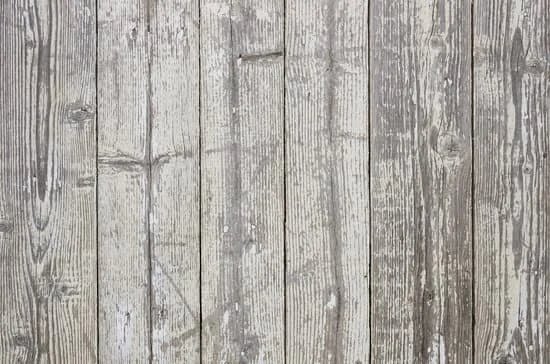Are you wondering how to make a woodworking mallet? Woodworking mallets are an essential tool for woodworkers, providing the necessary force to chisel, carve, or drive joints together without damaging the wood. In this article, we will provide a comprehensive guide on how to make your own woodworking mallet, including tips for choosing the right wood, designing the mallet for optimal performance, carving the mallet head, crafting the handle, assembly, and adding finishing touches.
Woodworking mallets come in various shapes and sizes, each designed for specific tasks such as chiseling or striking wooden joints. Understanding what makes a woodworking mallet unique and why it is essential for woodworkers will provide insight into how to design and craft one that is best suited for your specific needs.
In this guide, we will explore in detail the tools and materials needed to make a woodworking mallet, along with tips on choosing the right type of wood for durability and performance. We will also cover step-by-step instructions on carving the mallet head, making the handle, assembling the components properly, and adding personalized finishing touches to create a professional-looking and functional woodworking tool.
Whether you are an experienced woodworker or just starting on your woodworking journey, learning how to make a woodworking mallet can be a rewarding project that adds a valuable tool to your workshop.
Tools and Materials
When it comes to making a woodworking mallet, having the right tools and materials is essential to ensure that your mallet is not only functional but also durable. Here’s a comprehensive list of the items you’ll need to get started on crafting your very own woodworking mallet.
Wood
The type of wood you choose for your woodworking mallet will greatly impact its performance and longevity. Hardwoods such as maple, oak, or hickory are often preferred due to their durability and resistance to splintering.
Chisels and Carving Knives
To shape and carve the mallet head and handle, you’ll need a variety of chisels and carving knives in different sizes. A sharp set of carving tools will make the process much easier and more precise.
Mallet Head Material
Whether you choose to use wood or another material for the mallet head, ensure that it is heavy enough to provide sufficient force when striking a chisel or other woodworking tool. Many woodworkers prefer dense hardwoods like lignum vitae or hard rubber for added weight and durability.
Other Tools
In addition to chisels, carving knives, wood, and mallet head material, you’ll need a selection of other basic woodworking tools such as clamps, saws, sandpaper, drills (if necessary), measuring tape or ruler, pencil, hammer, and safety equipment such as goggles and gloves.
Now that you have the list of necessary tools and materials for making a woodworking mallet, you can gather everything you need before moving on to choosing the right wood for your project.
Choosing the Right Wood
When it comes to making a woodworking mallet, choosing the right wood is crucial in ensuring the durability and performance of the tool. There are several types of wood that are best suited for crafting a woodworking mallet, each with its own unique characteristics. One popular choice is hard maple, known for its strength and resistance to wear and tear.
Another option is beech wood, which offers a good balance of hardness and shock absorption. Cherry wood is also a suitable choice due to its attractive grain patterns and medium density, making it an aesthetically pleasing and functional material for a mallet.
In addition to these options, woodworkers may also consider woods like hickory for its toughness and flexibility or walnut for its rich color and density. Ultimately, the choice of wood will depend on personal preference as well as availability and cost. It’s important to select wood that will provide the desired weight, balance, and strength for the specific woodworking tasks at hand.
When working with different types of wood, it’s essential to consider their unique characteristics and how they might impact the functionality of the mallet. For example, while some woods may offer superior durability, others may provide better shock absorption or aesthetic qualities. Understanding these traits will help in selecting the right type of wood for the mallet head that meets both practical and aesthetic needs.
| Wood Type | Characteristics |
|---|---|
| Hard Maple | Strength, resistance to wear and tear |
| Beech Wood | Balance of hardness and shock absorption |
| Cherry Wood | Attractive grain patterns, medium density |
| Hickory | Toughness and flexibility |
Designing the Mallet
When it comes to making a woodworking mallet, there are several factors to consider in order to ensure optimal woodworking performance. Designing the shape, weight, and size of the mallet is crucial for achieving balance, power, and precision in your woodworking endeavors. Here are some tips and techniques for effectively designing a woodworking mallet:
- Consider the purpose: Before designing your woodworking mallet, it’s important to consider what type of woodworking tasks you’ll be using it for. Whether it’s for delicate chiseling work or heavy-duty mortising, the purpose will dictate the shape, weight, and size of the mallet.
- Balance and weight distribution: A well-designed woodworking mallet should have a balanced weight distribution to provide maximum impact with minimal effort. This means carefully considering the weight of the head in relation to the length and thickness of the handle.
- Optimal size and shape: The size and shape of your woodworking mallet will also play a significant role in its overall performance. For example, a larger head may provide more force but may be harder to control for precise work, while a smaller head may allow for better accuracy but with less impact.
By taking these tips and techniques into consideration, you can effectively design a woodworking mallet that is tailored to your specific needs as a woodworker. Whether you’re handling intricate joinery or heavy-duty chopping, the right design will make all the difference in achieving optimal woodworking performance.
Carving the Mallet Head
When it comes to making a woodworking mallet, the mallet head is a crucial component that requires precision and attention to detail. Here’s a step-by-step guide on how to carve the mallet head:
1. Shaping: Start by selecting a suitable block of wood for the mallet head. Maple, ash, or beech are popular choices due to their durability and impact resistance. Use a bandsaw or handsaw to cut the block into a rough shape. Then, use chisels and carving knives to refine the shape of the mallet head, ensuring that it is symmetrical and well-balanced.
2. Sanding: Once you have carved the mallet head into its final shape, it’s time to smooth out any rough edges and achieve a polished finish. Begin with coarse-grit sandpaper to remove any large imperfections, then gradually work your way up to finer grits for a smooth surface.
3. Finishing Techniques: To protect the wood from wear and tear, consider applying a finish to the mallet head. Boiled linseed oil is a popular choice as it not only enhances the natural beauty of the wood but also provides added durability.
Remember that patience and attention to detail are key when carving the mallet head. Take your time with each step to ensure that you create a high-quality and functional woodworking tool.
Whether you’re an experienced woodworker or just starting out, following these steps will help you create a well-crafted woodworking mallet that will serve you well in your future projects.
Making the Handle
Crafting a sturdy and ergonomic handle for a woodworking mallet is an essential step in creating a functional and comfortable tool. The handle is what provides the woodworker with control and power, making it crucial to get it right. Here are some detailed instructions on how to make a handle for a woodworking mallet.
Choosing the Right Wood
When selecting wood for the handle, it’s important to choose a hardwood that is both durable and comfortable to grip. Woods like hickory, ash, or oak are popular choices due to their strength and shock-absorbing properties. It’s also essential to consider the grain orientation of the wood, as this can impact the strength and stability of the handle.
Shaping the Handle
The next step is shaping the handle. This can be done using shaping tools such as chisels, spokeshaves, or rasps. The shape of the handle should provide a comfortable grip for the woodworker while ensuring that it fits securely into the mallet head. The ergonomics of the handle are crucial in preventing hand fatigue during extended use.
Finishing Techniques
Once the handle has been shaped, it’s essential to smooth out any rough edges and apply a finish to protect and enhance the wood. Sanding the handle with progressively finer grits of sandpaper will create a smooth surface, while applying a finish such as linseed oil or beeswax will help protect the wood from moisture and wear.
By following these detailed instructions for crafting a sturdy and ergonomic handle for a woodworking mallet, woodworkers can ensure they have created a high-quality tool that will serve them well in their craft.
Assembly
After carefully carving the mallet head and crafting a sturdy handle, it is time to assemble all the components to ensure a durable and functional woodworking mallet. The proper assembly of the mallet head and handle is crucial to guarantee that the tool can withstand the test of time and deliver reliable performance. This section will provide detailed instructions on how to correctly assemble the woodworking mallet for optimal functionality.
First, you will need to attach the mallet head to the handle securely. Depending on your design, this may involve drilling a hole in the mallet head that fits perfectly with the handle or carving a tenon on the handle to slot into a mortise in the mallet head. Whichever method you choose, it is essential to ensure a snug fit between the mallet head and handle to prevent any wobbling or loosening during use.
Once the mallet head and handle are securely connected, you can reinforce their bond by using wood glue for added strength. Apply a generous amount of wood glue to either end of the handle or inside the drilled hole before joining them together. Wipe off any excess glue and allow it to dry completely according to manufacturer’s instructions before moving on to further steps in assembling your woodworking mallet.
| Assembly Step | Instruction |
|---|---|
| Attaching Mallet Head | Drill hole in mallet head or carve tenon on handle; ensure snug fit |
| Using Wood Glue | Apply generously; allow drying time as per instructions |
Finishing Touches
In conclusion, making a woodworking mallet can be a rewarding and fulfilling project for any woodworker. By following the steps outlined in this article, you have learned how to select the right tools and materials, choose the best wood for your mallet, design its shape and size, carve the head, make the handle, assemble the pieces, and add personalized finishing touches.
The process of making a woodworking mallet allows you to exercise your creativity and craftsmanship while creating a tool that is essential for any woodworking project. With the right skills and attention to detail, you can create a mallet that not only functions well but also reflects your unique style and personality as a woodworker.
Remember that practice makes perfect when it comes to woodworking, so don’t be discouraged if your first attempt at making a mallet doesn’t turn out exactly as you had hoped. With patience and perseverance, you will continue to improve your woodworking skills and produce high-quality tools that you can be proud of.
So go ahead, gather your tools and materials, follow the steps discussed in this article on how to make a woodworking mallet, and let your creativity shine as you craft a unique and professional-looking tool for all your future projects.
Frequently Asked Questions
What Is the Best Wood to Make a Mallet?
The best wood to make a mallet would be a dense and durable hardwood such as maple, oak, or hickory. These types of wood are tough enough to withstand the force of striking without easily denting or splintering.
How Do You Make a Wood Carving Mallet?
To make a wood carving mallet, you would start by selecting a suitable piece of hardwood and shaping it into a cylindrical or rectangular head with rounded edges. Then, you’d create a handle by shaping another piece of wood and attaching it to the head securely.
This can be done using glue, dowels, or even metal wedges for added strength.
How Thick Should a Wooden Mallet Be?
The thickness of a wooden mallet will depend on its intended use. For general woodworking tasks, a mallet head should typically be around 2-3 inches in diameter with a thickness of 2-3 inches as well.
A thicker mallet may be necessary if heavier striking force is needed, while a thinner mallet may suffice for more delicate tasks such as carving.

Hi everyone! I’m a woodworker and blogger, and this is my woodworking blog. In my blog, I share tips and tricks for woodworkers of all skill levels, as well as project ideas that you can try yourself.





